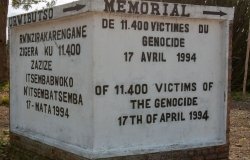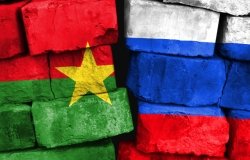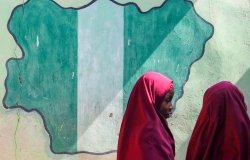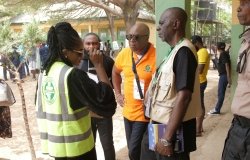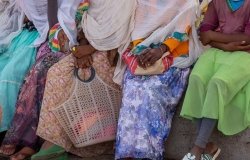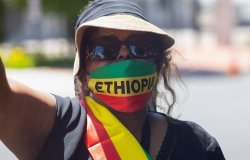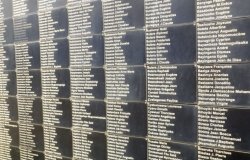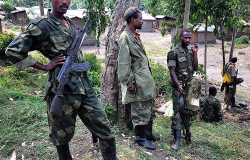
A blog of the Africa Program
A Reflection on the Conflict in the Amhara Region of Ethiopia
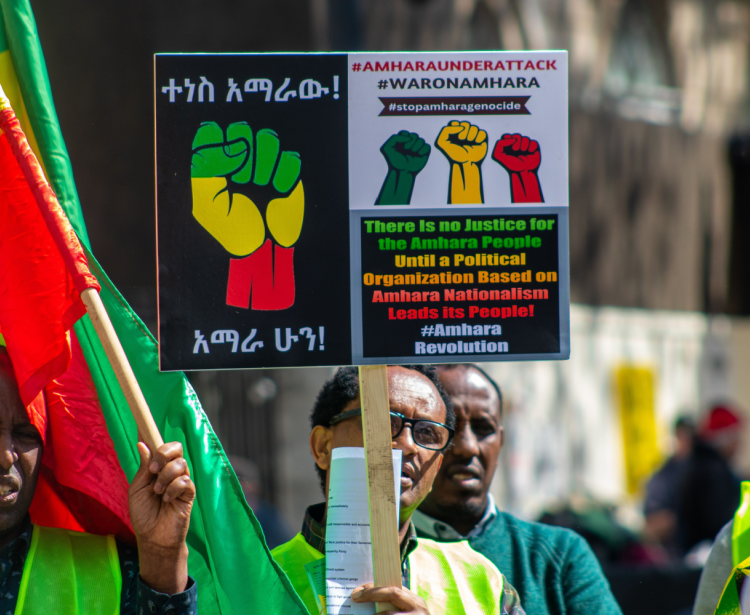
Less than ten months after the November 2022 signing of the Pretoria Agreement that ended the two-year-long Tigray crisis, the second-largest region—the Amhara region—in the country is in turmoil as a result of the outbreak of a military confrontation between the Federal Army and the Fano armed groups since August 2023. As such, there is growing fear that Ethiopia is once again sliding into a protracted civil war. The state of emergency declared in the Amhara region has also further exacerbated insecurity with mass arrests, extrajudicial killings, internet blockages, and disruptions to basic services being the order of the day. As the conflict escalates, several local and international actors (including the United States) have expressed concern and called for peace.
Given the population size and geography of the Amhara region, this new conflict will continue to have severe security and humanitarian repercussions. The Ethiopian Human Rights Commission reported that the conflict is already claiming the lives of many civilians. In terms of security, there are indications that the conflict could spread to the neighboring Oromia region. Unlike the Tigray War, there is no buffer between the Amhara region and Addis Ababa, thus putting the survival of the central government at stake should the conflict remain unresolved. Similarly, the conflict also threatens peace in Tigray. Meanwhile, contestation over the Welkait and Raya territories continues. Considering the proximity of the Amhara region to Sudan and Eritrea, the conflict could potentially become a regional crisis.
Dynamics of the Amhara Conflict
Prior to the conflict, there were areas of mutual support between the Federal government and Fano forces. In 2019, upon the formation of the Prosperity Party, Prime Minister Abiy Ahmed praised the Fano, along with Qerro, for their role in the political change. Fano forces also fought the Tigray War on the side of the Federal government. However, tensions between Fano and the federal government surged in April 2022 with the arrest of many Fano fighters. Uncertainties that arose from the Pretoria Agreement regarding contested territories such as Welkait and Raya further expanded the rift between the two actors. Furthermore, the decision to dissolve regional Special Forces served as a major turning point. This action was met with fierce resistance from protestors who argued that the decision was untimely and would leave the region defenseless from potential attacks from Tigray and Oromia. A subsequent wave of street protests across the Amhara region was followed by the defection of close to 50% of Amhara regional Special Forces to the Fano armed groups.
In response, Ethiopia’s federal army launched three waves of military crackdowns in the Amhara region. The first wave involved small-scale and fragmented confrontations between the Ethiopian National Defense Forces (ENDF) and the Fano forces, mainly focusing on the Shoa and Gojam areas. A second wave followed the April 27, 2023 assassination of Girma Yeshitla, the head of the Amhara Region Prosperity Party.
By mid-July 2023, the Fano movement grew into a more structured and to some extent centralized force. In early August 2023, the Fano forces controlled several towns and major airports in the region, including the regional capital Bahir Dar. As a result, the political and security structures of the regional government collapsed, forcing the ruling Amhara Prosperity Party and regional government into exile to Addis Ababa. The federal government responded by declaring a state of emergency and launching the third wave of military operation.
The Drivers of the Conflict
The conflict in the Amhara region is driven by a combination of triggering factors and long-term grievances. Political discontent tracing back to 1991 served as a foundation for the ongoing conflict. In May 1991, the Ethiopian Peoples’ Revolutionary Democratic Front (EPRDF) introduced ethnic-based politics. Since then, ethnic politics has become the modus operandi in Ethiopia and served as a basis for the country's existing federal arrangement and party politics.
From the start, the EPRDF regime and other ethno-nationalist forces used derogatory labeling and anti-Amhara narratives to mobilize other ethnic groups against the Amharas. Consequently, Amharas living outside of the Amhara region have long been subjected to pogrom-like attacks including harassment, massacres, and mass expulsions.
In present-day Ethiopia, the Amharas believe that the existing constitution and ethnic-based territorial arrangement disregards their interest and safety. Amhara nationalists underscore that the narrations embedded in the country’s current constitution expose the Amharas to “ethnic cleansing” and “genocide.” They also argue that the existing ethnic-based federal arrangements have disfranchised and marginalized more than 10 million Amharas outside the Amhara region. Moreover, Prime Minister Abiy Ahmed’s inability to prevent the killings and displacement of Amharas from Oromia and Benishangul Gumuz regions has sown distrust and lack of confidence in his administration. The Fano and the zone and local level officials of the Amhara region view the emergence of the Oromo Prosperity Party as a dominant force within the Prosperity Party and the Federal government as a threat that undermines the political and security interests of the Amhara people.
In light of such context, the federal government’s moves to disarm the Fano along with its plan to dissolve regional Special Forces acted as triggering factor. The exclusion of Amhara voices from the recent peace processes including the Pretoria peace talks with the TPLF and the Tanzania peace talks with the Oromo Liberation Army, uncertainties regarding the fate of contested territories such as Welkait and Raya, and reluctance to disarm the Tigrayan People's Liberation Front (TPLF) led Tigray Defense Force also served as push factors. The Tigray War also played its part by enabling the Fano to mobilize youth and equip itself with abundant armaments. Moreover, popular grievance precipitated from a shortage of fertilizer, travel restrictions imposed on Amhara travelers to Addis Ababa, and demolition of more than a hundred thousand houses in Oromia’s Sheger city further fueled armed struggle against government forces.
Room for Peace?
Despite calls by civil society, religious institutions, and the international community for Ethiopia’s federal government to look for a peaceful end to the conflict, serious talks among relevant parties have yet to start. So far, the federal government maintains a conviction that the problem can be resolved through might. Parallel to the military approach, the government has attempted to reach out to local and provincial Fano leaders through elders and religious leaders. However, Fano forces have rejected local initiatives and demanded a negotiation platform convened by international actors.
Future peace engagements will be challenged further by additional factors: diverging views of relevant parties over Welkait and other contested territories; and the question of who will represent the Amhara in talks, as the process of centralizing the various factions of Fano has yet to be completed.
To sum up, the ever-escalating conflict in Ethiopia’s Amhara region—swinging between an armed uprising and armed insurgency—needs urgent attention from the international community. In the short run, the collective efforts of local, regional, and global actors are needed to coerce the belligerents to commit to an immediate cessation of hostilities. In particular, international actors such as the African Union, South Africa, and the United States should leverage their success in helping bring about Tigray’s cessation hostilities to address the conflict in Amhara region. Ultimately, lasting peace in Ethiopia needs an urgent and inclusive dialogue and reconciliation.
Adane Tadesse is a Ph.D. candidate in Political Science at Addis Ababa University in Ethiopia. Since 2012, he has been a lecturer and researcher in Political Science at Debre Markos University and Addis Ababa University. His area of research interests includes peacebuilding, political settlement, foreign policy, governance, and environmental politics in Africa. Currently, Mr. Adane is a Southern Voices Network for Peacebuilding Scholar for the Fall 2023 term in Washington, DC.
The opinions expressed on this blog are solely those of the authors. They do not reflect the views of the Wilson Center or those of Carnegie Corporation of New York. The Wilson Center's Africa Program provides a safe space for various perspectives to be shared and discussed on critical issues of importance to both Africa and the United States.
About the Author
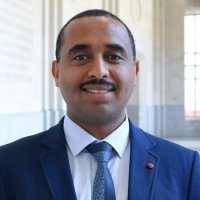
Adane Tadesse
PhD Candidate and Lecturer, Department of Political Science and International Relations, Addis Ababa University, Ethiopia

Africa Program
The Africa Program works to address the most critical issues facing Africa and US-Africa relations, build mutually beneficial US-Africa relations, and enhance knowledge and understanding about Africa in the United States. The Program achieves its mission through in-depth research and analyses, public discussion, working groups, and briefings that bring together policymakers, practitioners, and subject matter experts to analyze and offer practical options for tackling key challenges in Africa and in US-Africa relations. Read more


